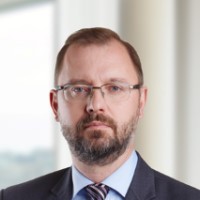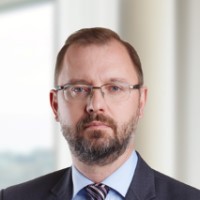Patent Litigation 2024
Finland
1. Intellectual Property Rights and Granting Procedure
1.1 Types of Intellectual Property Rights
Finland recognises patents and utility models as protection for inventions. In the pharmaceuticals sector, patent protection can be prolonged by supplementary protection certificates (SPCs).
1.2 Grant Procedure
National patents can be sought through national applications. Applications are filed with the Finnish Patent and Registration Office (PRO).
Patent applications are scrutinised and granted by the PRO. Utility model applications are also filed with the PRO and are subject to formal examination before being granted.
Patent protection in Finland can also be sought by filing European and unitary patent applications with the European Patent Office (EPO). Such applications must be validated in Finland to be valid there, and are examined and granted by the EPO. Finland is part of the unitary patent system, and thus unitary patents are also applied for, examined and granted as enforceable in Finland.
1.3 Timeline for Grant Procedure
The term from filing a national patent application until granting is two-and-a-half to three years, on average. The term from filing a utility model is three months, on average.
1.4 Term of Each Intellectual Property Right
The term for a patent is a maximum of 20 years, and the term for a utility model is a maximum of ten years.
1.5 Rights and Obligations of Owners of Intellectual Property Rights
The holder of a patent or a utility model has the right to injunct third parties from using, importing or otherwise commercially utilising a protected invention. The patent or utility model rights are upheld through payment of annual fees.
1.6 Further Protection After Lapse of the Maximum Term
When a patent’s term has lapsed for an innovation in the pharmaceuticals field, it is possible to prolong the patent’s term for a maximum of five-and-a-half years with an SPC. An SPC comes into force when the basic patent supporting the SPC expires, and can be in force for up to five years. This is the same as the period of time that elapses between the filing date and the granting of the marketing authorisation for the pharmaceutical product, minus five years. The term can be extended for a further six months if the pharmaceutical product’s suitability for children has been tested in a paediatric investigation plan (paediatric extension).
1.7 Third-Party Rights to Participate in Grant Proceedings
During the application period, third parties may file observations with the PRO, and such observations are part of the examination.
1.8 Remedies Against Refusal to Grant an Intellectual Property Right
If a patent or a utility model is not granted by the PRO, the decision can be appealed by the applicant.
1.9 Consequences of Failure to Pay Annual Fees
If the annual fees are not duly paid, the patent or intellectual property right will lapse.
1.10 Post-grant Proceedings Available to Owners of Intellectual Property Rights
The granted patent claims can be restricted provided that the amended claims have support in the patent application as filed, and provided that the scope of protection is not expanded. A request for restriction of claims can be filed with the PRO. However, if an invalidation action is pending, the restriction of claims shall be filed with the court handling the invalidation action.
2. Initiating a Lawsuit
2.1 Actions Available Against Infringement
The technical intellectual property (IP) rights-holder may initiate various types of actions against an alleged infringer. The rights-holder can apply for an interim injunction or seek for interim relief, such as seizure of evidence, as preliminary actions. Such actions are followed by main infringement actions claiming injunctions and damages.
It is also possible to file declaratory actions – eg, requesting the court to declare that a patent or a utility model is infringed.
2.2 Third-Party Remedies to Remove the Effects of Intellectual Property
Third parties who wish to remove the effects of the technical IP right may, as a defence, commence opposition action against the validity of the patent, provided that the term for oppositions has not expired.
As a defence in patent or utility model infringement actions, the defendant may initiate a revocation action to invalidate the patent or utility model.
It is also possible to initiate non-infringement actions, even if a non-infringement action is pending. A third party has also the possibility to claim prior use or a compulsory licence.
2.3 Courts With Jurisdiction
The first-instance court for IP matters is the Market Court located in Helsinki. Judgments from the Market Court can be appealed to the Supreme Court, subject to the Supreme Court granting permission to appeal. This permission is granted in situations where the matter is of legal precedence value. In practice, this means that permission to leave is rarely granted.
From June 2023, the Unified Patent Court (UPC) has commenced its operations and has a local division in Helsinki, which has already heard its first case. The court languages are English, Finnish or Swedish. In addition to applying in Finland, the Agreement of the Unified Patent Court is in force in Austria, Belgium, Bulgaria, Denmark, Estonia, Finland, France, Germany, Italy, Latvia, Lithuania, Luxembourg, Malta, the Netherlands, Portugal, Slovenia and Sweden. The decisions of the local division can be appealed to the UPC Court of Appeal located in Luxembourg.
2.4 Specialised Bodies/Organisations for the Resolution of Disputes
The Market Court is a specialised IP court. The UPC is a pan-European court specialised in patent disputes.
2.5 Prerequisites to Filing a Lawsuit
There are no formal requirements for a patent-holder filing an infringement or declaratory lawsuit in Finland. It is recommendable for members of the Finnish Bar not to initiate lawsuits without sending a warning letter first, unless there is great urgency. A licensee should inform the patent-holder prior to initiating a lawsuit. When initiating a revocation action, the PRO should be informed.
2.6 Legal Representation
The parties need to be informed by a lawyer who has the right to represent a party before a Finnish court. In practice, that means a member of the Finnish Bar or a person authorised by the Finnish Bar. Members of the Finnish Bar are also eligible to represent a party before the UPC.
2.7 Interim Injunctions
Interim injunctions are available and may be granted in situations where the infringement is likely and imminent, and where the obtaining of an injunction is urgent. If there is extreme urgency, ex parte interim injunctions are also available.
2.8 Protection for Potential Opponents
The Market Court does not accept protective briefs.
2.9 Special Limitation Provisions
Injunctive relief can be obtained as long as the patent or utility model is in force. Damages can be claimed for five years prior to the date when the damages action was initiated.
2.10 Mechanisms to Obtain Evidence and Information
Prior to infringement proceedings, it is possible to apply for seizure of evidence provided there is a risk that the evidence will be destroyed. The disclosure of seized evidence is subject to a separate decision, and if the seized evidence contains trade secrets, such evidence might not be disclosed to the applicant.
It is also possible to request disclosure of evidence in main infringement and damages proceedings. In such proceedings, the request may be denied by the court if the evidence contains trade secrets.
2.11 Initial Pleading Standards
The application for summons (initial written pleading) should be substantive, and the claimant should support the argumentation with documentary evidence and potential expert opinions. The same applies to the first responsive brief from the defendant. There is usually a second round of written pleadings so the parties may complement their claims with additional evidence and supportive arguments.
2.12 Representative or Collective Action
Class actions in IP matters have not occurred. Class actions can only be initiated by the consumer ombudsman, meaning that there should be a consumer interest involved for a class action.
2.13 Restrictions on Assertion of an Intellectual Property Right
The patent or utility rights should not be abused or misused, and such abuse could be subject to anti-competition actions.
3. Infringement
3.1 Necessary Parties to an Action for Infringement
The patent-holder or a licensee can initiate an action for infringement. It is not possible for a third party to file an action for infringement.
3.2 Direct and Indirect Infringement
The infringement can be either direct or indirect. Even if the patent is not infringed directly through the use of the patented invention, infringement can also be determined if the essential parts of the invention are used in Finland.
3.3 Process Patents
Regarding process patents, to constitute infringement the main parts of the process are used in Finland.
3.4 Scope of Protection for an Intellectual Property Right
The courts in Finland recognise literal and equivalent infringement. There is a free evaluation of evidence so the prosecution history may be considered by the court.
3.5 Defences Against Infringement
Third parties may use various arguments as a defence in an infringement action (in addition to claiming non-infringement), such as:
- compulsory licence;
- prior use;
- patent exhaustion;
- FRAND; and
- own patent rights.
3.6 Role of Experts
Experts may be appointed by the court and are frequently appointed by the parties. The legal judges of the Market Court are always assisted by a technical judge, who has background as a patent agent. In addition, the Market Court may appoint a technical judge who is an expert in the relevant field of the patent-in-suit.
The parties regularly appoint their own expert(s), who are usually examined as expert witnesses during the main oral hearing.
3.7 Procedure for Construing the Terms of the Patent’s Claim
There is no separate procedure for construing the terms of the patent’s claims.
3.8 Procedure for Third-Party Opinions
There is no system by which the court can seek third-party opinions.
4. Revocation/Cancellation
4.1 Reasons and Remedies for Revocation/Cancellation
Revocation actions can be initiated by anyone with an interest in invalidating a patent or utility model right. The threshold for standing to sue has been seen as rather low by Finnish courts.
4.2 Partial Revocation/Cancellation
Partial revocation has been regarded as possible by the Market Court, in situations where the partial revocation does not require significant patentability considerations by the court.
4.3 Amendments in Revocation/Cancellation Proceedings
It is possible for the patent-holder to amend/restrict the patent claims in revocation proceedings. The amended claim shall have support in the patent application as filed, and may not expand the scope of the patent claim.
4.4 Revocation/Cancellation and Infringement
In most cases, the revocation and infringement are held in parallel such that the decision is announced at the same time in both actions by the court.
5. Trial and Settlement
5.1 Special Procedural Provisions for Intellectual Property Rights
There are some special rules for the Market Court’s IP proceedings; however, the rules are rather flexible. The typical timeline for proceedings is that when the application for summons has been filed and served at the defendant, the defendant must respond in writing within 30 to 45 days. Following that, there is a scheduling hearing, whereafter the applicant usually files a second written brief, and the defendant responds to that in writing.
The parties usually get one to two months for their written submissions. Thereafter, there is a preparatory hearing during which evidence and (expert) witnesses are discussed, and the dates for the main hearing are confirmed. The main oral hearing takes one to three weeks, and comprises:
- an opening presentation;
- presentation of written evidence; and
- examination and cross-examination of expert witnesses and witnesses of fact.
At the end of the main hearing, the parties present their closing statements. The judgment is usually announced three to six months after the main hearing. In total, the proceedings take 16 to 20 months.
5.2 Decision-Makers
The panel of the Market Court consists of three legal judges and one technical judge. The Court may also appoint an additional technical judge familiar with the relevant field of the patent-in-suit.
5.3 Settling the Case
The case can be settled at any time before the judgment is announced. The judge regularly asks the parties if there is the possibility for a settlement, but there is no further formal process.
5.4 Other Court Proceedings
Generally, the court tries to handle an action without stays. Thus, parallel revocation/infringement proceedings in other jurisdictions do not usually affect the proceedings before the Market Court. Should both parties request a stay, the court will likely accept this. There is no case law on anti-suit injunctions in Finland.
6. Remedies
6.1 Remedies for the Patentee
In interim injunction proceedings, the applicant can request that a conditional fine be set should the defendant breach the interim injunction. Such fine is enforced by the bailiff’s office and is paid to the government, not to the applicant.
Where the infringement has caused damages, the defendant is liable to compensate the claimant for such damages. The claimant has the burden of proving the causality between the infringement and the damages, and the amount of the damages. There are no punitive damages.
If the court finds that the infringement was not negligent, the amount of the damages may be mitigated. The losing party is also liable to compensate the legal costs of the winning party.
6.2 Rights of Prevailing Defendants
A prevailing defendant can claim compensation of its legal fees.
6.3 Types of Remedies
This is not applicable.
6.4 Injunctions Pending Appeal
An injunction is generally enforceable pending appeal. The Supreme Court can prohibit the enforcement of an appeal.
7. Appeal
7.1 Special Provisions for Intellectual Property Proceedings
There are special provisions regarding the appellate procedure in IP rights proceedings – in such proceedings, appeals from the first-instance court, the Market Court, go directly to the Supreme Court and are subject to the permission granted by the Supreme Court.
7.2 Type of Review
The Supreme Court’s review is limited to a legal review.
8. Costs
8.1 Costs Before Filing a Lawsuit
There are no direct costs before filing a lawsuit.
8.2 Calculation of Court Fees
For national proceedings before the Market Court, there is a flat fee of EUR4,000 per case.
8.3 Responsibility for Paying the Costs of Litigation
The claimant must pay the court fee when initiating the court proceedings. The losing party is required to compensate the winning party for its legal costs, including attorney’s fees, expert/witness costs, etc. The court may adjust such costs depending on various aspects, such as whether all claims have been won or just parts of them, and the amount of legal costs may also be challenged by the opposing party.
9. Alternative Dispute Resolution
9.1 Type of Actions for Intellectual Property
Alternative dispute resolution is not common, but mediation proceedings and arbitration proceedings related to IP rights do occur.
10. Assignment and Licensing
10.1 Requirements or Restrictions for Assignment of Intellectual Property Rights
There are no formal rights, but it is recommendable to register an assignment with the PRO; for such registration, the assignment needs to be in writing.
10.2 Procedure for Assigning an Intellectual Property Right
See 10.1 Requirements or Restrictions for Assignment of Intellectual Property Rights.
10.3 Requirements or Restrictions to License an Intellectual Property Right
There are no formal requirements for licensing IP rights, but it is recommendable to register a licence with the PRO; for such registration, the licence needs to be in writing.
10.4 Procedure for Licensing an Intellectual Property Right
See 10.3 Requirements or Restrictions to License an Intellectual Property Right.
Trends and Developments
The UPC
The most important development during 2023 was the Unified Patent Court (UPC). The UPC has a local division in Helsinki, with Judge Petri Rinkinen being appointed as the presiding judge on a part-time basis. The UPC is located in the same premises in Helsinki as the Finnish Market Court, which handles intellectual property (IP) actions in Finland.
The first UPC case was filed with the Helsinki local division on 5 July 2023 (Case ID: 214/2023) in a matter concerning an application for provisional measures (a preliminary injunction request) and a main infringement action. The provisional measures proceedings progressed in a timely manner with an oral hearing and an oral judgment being announced within two-and-a-half months from the filing date. The PI application was dismissed on formal grounds as the court found that the withdrawal of the opt-out concerning the patent-in-suit was ineffective, owing to the fact that the patent-in-suit had been subject to national litigation in a UPC country and appeal in the matter was pending. The decision is currently subject to appeal.
The initial experiences with the UPC have been positive, in the sense that the judges have significant expertise and willingness to proceed expediently. The case management system (CSM), however, has not been up to speed and will need significant improvements. While certain improvements have already been implemented, it will likely take some time for the CMS system to work properly.
Referrals to the CJEU
The Market Court has recently referred two cases to the CJEU in order to obtain judgments on the interpretation of the SPC Regulation and the Enforcement Directive.
Supplementary Protection Certificate (SPC)
Teva has initiated invalidation proceedings in Finland against Merck Sharp & Dohme’s SPC (granted based on the basic patent protecting the active ingredients sitagliptin and metformin – the active ingredients of Merck Sharp & Dohme’s product JANUMET®. Teva claims that an SPC should not be granted for the combination product sitagliptin/metformin as an SPC has already been granted for the mono product sitagliptin. Merck Sharp & Dohme claims that the definition of “product” should have the same meaning throughout Article 3 of the SPC Regulation and, as the criteria for an SPC under Section 3(a) were met for the combination product, the SPC was validly granted. It is possible to grant more than one SPC based on the same basic patent.
On 17 February 2022, the Market Court referred the case (Teva v Merck Sharp & Dohme C-119/22) to the CJEU, with questions related to the interpretation of Article 3 (c) of Regulation (EC) No 469/2009 (the “SPC Regulation”). In a parallel case pending with the Irish Supreme Court, a similar referral (Merck Sharp & Dohme v Clonmel C-149/22) was made to the CJEU; both cases are being handled jointly by the CJEU. The questions asked by the Market Court are as follows.
- What criteria must be applied to determine when a product has not already been granted an SPC within the meaning of Article 3(c) of the SPC Regulation?
- Must the assessment of the condition set out in Article 3(c) of the SPC Regulation be regarded as being different from the assessment of the condition set out in Article 3(a) of that regulation, and if so, in what way?
- Must the statements on the interpretation of Article 3(a) of the SPC Regulation in the judgments of the Court in Case C-121/17 (Teva UK) and Case C-650/17 (Royalty Pharma) be regarded as relevant to the assessment of the condition in Article 3(c) of the SPC Regulation and, if so, in what way?
In that connection, particular attention should be paid to the statements made in those judgments regarding Article 3(a) of the SPC Regulation, specifically:
- the essential meaning of patent claims; and
- the assessment of the case from the point of view of a person skilled in the art, and in light of the prior art, at the filing date or priority date of the basic patent.
Further questions include the following.
- Are the concepts of “core inventive advance”, “central inventive step” and/or “subject matter of the invention” of the basic patent relevant to the interpretation of Article 3(c) of the SPC Regulation and, if any or all of those concepts are relevant, how are they to be understood for purposes of interpreting Article 3(c) of the SPC Regulation?
- For the purposes of applying those concepts, does it make any difference whether the product in question consists of a single active ingredient (mono-product) or a combination of active ingredients (combination product) and, if so, in what way?
- How is the latter question to be assessed in a case in which the basic patent contains, on the one hand, a patent claim for a mono-product and, on the other hand, a patent claim for a combination product, the latter patent claim relating to a combination of active ingredients consisting of the active ingredient of the mono-product plus one or more active ingredients from the known prior art?
The opinion of the Advocate General is expected in April 2024, and the judgment of the CJEU during Autumn 2024.
Liability to Compensate Damages for an Unnecessary Preliminary Injunction (PI)
In pending damages proceedings, Mylan has claimed damages from Gilead owing to a PI having been granted by the Market Court and thereafter cancelled by the Supreme Court. Finnish courts have traditionally applied a so-called strict liability regime when it comes to the damages to be awarded if a PI has been unnecessarily granted. On 14 July 2022 the Market Court referred the case of Mylan v Gilead (C-473/22) to the CJEU, requesting the CJEU to respond to questions addressing whether a strict liability damages regime, such as the one in force in Finland, is compliant with Article 9(7) of the Enforcement Directive.
In this case, the PI had been cancelled by the Supreme Court owing to the CJEU ruling in Teva UK (C-121/17), which led the Supreme Court to find it likely that the relevant SPC was invalid. Mylan has claimed that Gilead should compensate Mylan for the alleged damages caused by the PI. The Market Court found that it was unclear whether it could apply the strict liability regime, in light of the CJEU ruling in Bayer Pharma (C-688/19). The Advocate General’s opinion concluded that a strict liability regime would not be in line with Article 9(7) of the Enforcement Directive.
However, in its judgment announced on 11 January 2024, the CJEU concluded that Article 9(7) does not preclude national legislation, which provides for a strict liability-based damages regime where the court has the possibility of reducing the amount of damages to be awarded, taking into account all the relevant circumstances of the case including the potential contribution of the damage by the defendant. The CJEU began its response by first noting that the Enforcement Directive provides for the protection of IP rights and allows right-holders to claim provisional measures that can directly prevent the infringement of an IP right; however if these measures are revoked or lapse owing to the applicant’s own conduct, or if it is later established that no infringement has occurred, the defendant is entitled to claim compensation for the damage suffered.
The Court noted that, following from Article 9(7) of the Enforcement Directive, it is up to the competent court to examine whether three conditions of said provision are met – namely:
- whether the provisional measures have indeed been revoked or lapsed due to the applicant’s own conduct, or whether it has been established that no infringement has occurred in the first place;
- whether any damage has been caused to the defendant; and
- whether there is a causal relation between the damage and the provisional measures.
To answer the question of whether member states are obliged to apply a certain compensation regime under Article 9(7), the CJEU pointed out that it is important to consider the context and history of said provision, as well as the aim pursued by the Enforcement Directive as a whole. In this respect, the court stressed that the Enforcement Directive is not intended to regulate all aspects of IP rights, but instead to oblige member states to provide for effective remedies. The CJEU noted that Article 9(7) of the Enforcement Directive, in light of Article 50(7) TRIPS, gives member states discretion as to the system of liability of the applicant for provisional measures, and this may be based on either strict liability or fault [34-36].
The CJEU noted that in Bayer Pharma it had held that the Enforcement Directive does not in principle preclude such national legislation as does not require the defendant to be compensated for the damage because they failed to act in a manner which was normally expected in the circumstances of the case to avoid or minimise the damage, even if the patent on the basis of which those measures were imposed has subsequently been invalidated.
The CJEU noted that it had also expressly stated in Bayer Pharma that such legislation is compatible with Article 9(7) only on condition that the court is able to take account of all the circumstances of the case in arriving at a possible refusal of compensation.
Consequently, the court noted that it cannot be inferred from the Bayer Pharma judgment that Article 9(7) would provide for compensation for the defendant’s damage only where the applicant for provisional measures is at fault. The CJEU’s intention in Bayer Pharma was merely to remind the national courts that they must assess the specific circumstances of the case in order to determine whether the applicant should be ordered to pay the defendant compensation, which must be “appropriate” – that is to say, justified in the light of those circumstances.
As a consequence, the CJEU re-stated its findings in Bayer Pharma: the CJEU stressed that, although national courts’ possibility of awarding damages is strictly limited to the conditions laid down in Article 9(7) of the Enforcement Directive, the fact that those conditions are satisfied in a particular case does not mean that the national courts must automatically and in any event order the applicant to compensate the defendant for the damage caused by those measures. It follows from this that member states must ensure that the national courts are able to take account of all the circumstances of the case before it, including the proceedings of the parties, irrespective of which type of liability regime has been adopted, when transposing Article 9(7) into national legislation.
The CJEU pointed out that the strict liability-based damages regime does not limit the right-holder’s ability to act as such, but strikes a balance between the protection of IP rights and the rights of the defendant. A strict liability-based damages regime does not necessarily undermine this balance.
The case is still pending with the Finnish Market Court, so the judgment of the CJEU in Mylan v Gilead (C-473/22) has not yet been applied by the Court.
PI Proceedings/Actions Based on Patent Application
The question as to what rights a patent provides pre-grant (ie, so-called provisional protection) was considered by the Market Court in a matter concerning Novartis’ blockbuster drug GILENYA®. On 10 March 2022, the Market Court granted a temporary preliminary injunction on an ex parte basis against Mylan and Teva, based on Novartis’ European patent application, the claims of which had been published by the Finnish PTO but not yet granted. After the inter partes hearing, on 7 April 2022 the Market Court rejected the application for a preliminary injunction and revoked the temporary decision. The Market Court concluded based on the wording of the law that the provisional protection does not provide an enforceable right, and therefore Novartis had not established that it had a claim against the generic companies. The Supreme Court did not grant a leave to appeal to Novartis, and thus the decision is final.
PI Proceedings/Forfeiture of Right to Claim Damages
On 16 December 2023, the Market Court ruled in an interim decision (Krka v Gilead) regarding the right to claim damages and expenses owing to an unnecessary PI having been forfeited. According to Chapter 7, Section 12 of the Code of Judicial Procedure (CJP), an action for compensation of damages and expenses should, under threat of forfeiture of the right of action, be brought within one year of the date on which the precautionary measure was cancelled.
The defendant had argued that this one-year period began to run from the date on which the PI had been revoked by the Supreme Court. The claimant revoked the provisional measure on 11 April 2019, and the Enforcement Office notified the claimant of the revocation of the provisional measure. Krka had brought the action for damages on 11 May 2021, which was therefore within the one-year time limit laid down in Chapter 7, Section 12 of the CJP. Krka claimed that the one-year period would start to run as of the date on which the Market Court gave its decision in the main infringement proceedings on 11 March 2021.
The Market Court held that the one-year time limit started to run as of 11 April 2019, when the Supreme Court ordered the revocation of Gilead’s provisional measure and when the Enforcement Office cancelled the enforcement of said measure. Therefore, Krka should have brought the action for damages on 11 April 2020 at the latest. However, as the action was only brought on 11 May 2021, it must be dismissed as time-barred. The decision is not final as Krka may appeal it within 60 days, subject to leave to appeal from the Supreme Court.
SEP Cases (Including the FRAND Defence)
During the past two years (and for the second time following the Nokia v Apple litigation cases), the Market Court has handled standard essential patent cases (including with the FRAND defence) between Nokia and OPPO. The cases were settled, so no rulings have been issued by the Market Court.
The question on formal priority has also been assessed in the context of SEPs (Nokia v TomTom and Continental).










